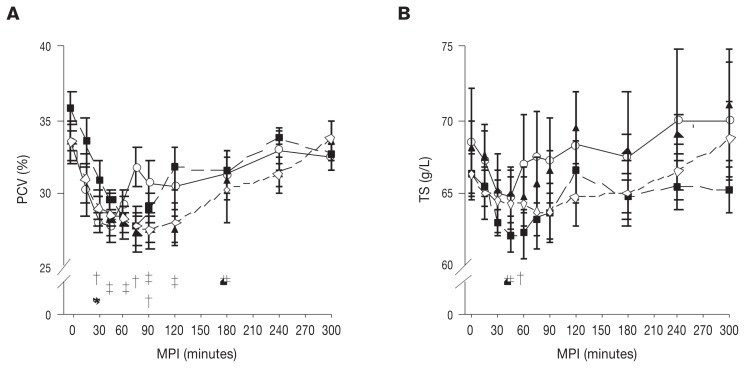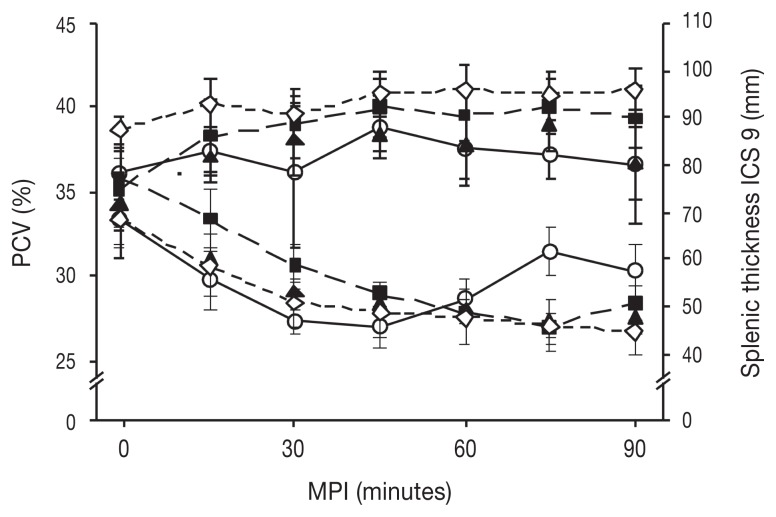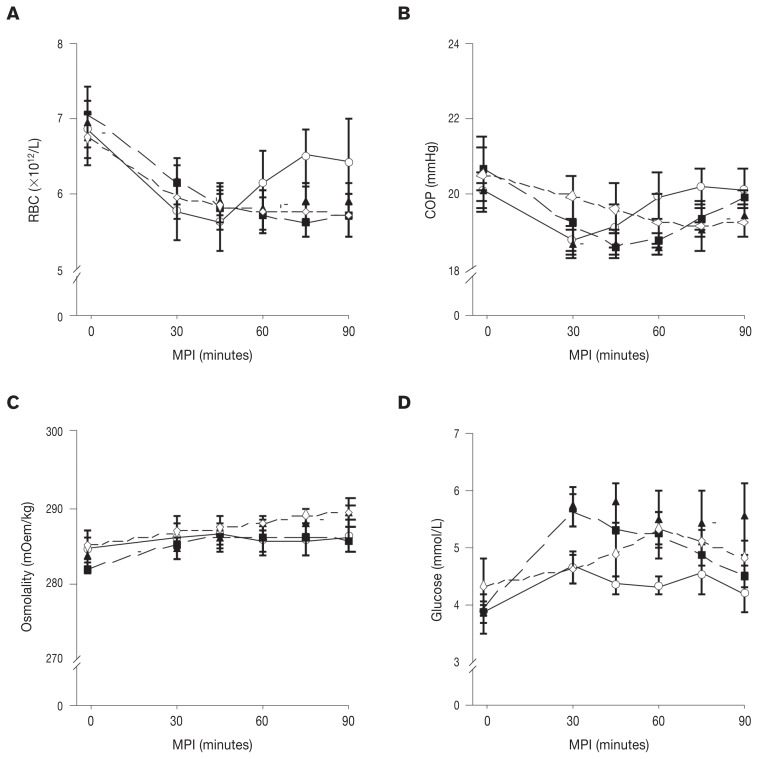
| Size | Price | Stock | Qty |
|---|---|---|---|
| 100mg |
|
||
| 500mg |
|
||
| 1g |
|
||
| Other Sizes |
|
Purity: ≥98%
Detomidine HCl (MPV 253; MPV-253), the hydrochloride salt of detomidine, is an alpha2/α2-Adrenoreceptor agonist with sedative properties. It creates analgesic and sedative effects that are dose-dependent and mediated by α2 catecholamine receptor activation. Detomidine is an imidazole derivative and α2-adrenergic agonist that is mainly used in horses as a large animal sedative. Typically, it can be found as the salt detomidine hydrochloride. Veterinarians can obtain it as a prescription drug under the brand name Dormosedan.
| Targets |
Adrenergic Receptor
|
|---|---|
| ln Vitro |
Currently detomidine is only authorized for use on equines. A negative feedback response is induced by α2-adrenergic agonists, which reduce the production of excitatory neurotransmitters and produce dose-dependent analgesic effects through the activation of α2 catecholamine receptors. In addition to its effects on the heart and lungs, detomidine also has an antidiuretic effect and inhibits the sympathetic nervous system.
|
| References |
|
| Additional Infomation |
See also: Detomidine (has active moiety).
|
| Molecular Formula |
C12H15CLN2
|
|
|---|---|---|
| Molecular Weight |
222.71
|
|
| Exact Mass |
222.092
|
|
| Elemental Analysis |
C, 64.72; H, 6.79; Cl, 15.92; N, 12.58
|
|
| CAS # |
90038-01-0
|
|
| Related CAS # |
Detomidine; 76631-46-4
|
|
| PubChem CID |
56031
|
|
| Appearance |
White to off-white solid powder
|
|
| Boiling Point |
386.5ºC at 760mmHg
|
|
| Melting Point |
160ºC
|
|
| Flash Point |
200.6ºC
|
|
| LogP |
3.419
|
|
| Hydrogen Bond Donor Count |
2
|
|
| Hydrogen Bond Acceptor Count |
1
|
|
| Rotatable Bond Count |
2
|
|
| Heavy Atom Count |
15
|
|
| Complexity |
181
|
|
| Defined Atom Stereocenter Count |
0
|
|
| SMILES |
Cl.N1C=C(CC2C(C)=C(C)C=CC=2)NC=1
|
|
| InChi Key |
OIWRDXKNDCJZSM-UHFFFAOYSA-N
|
|
| InChi Code |
InChI=1S/C12H14N2.ClH/c1-9-4-3-5-11(10(9)2)6-12-7-13-8-14-12;/h3-5,7-8H,6H2,1-2H3,(H,13,14);1H
|
|
| Chemical Name |
5-[(2,3-dimethylphenyl)methyl]-1H-imidazole;hydrochloride
|
|
| Synonyms |
|
|
| HS Tariff Code |
2934.99.9001
|
|
| Storage |
Powder -20°C 3 years 4°C 2 years In solvent -80°C 6 months -20°C 1 month Note: Please store this product in a sealed and protected environment, avoid exposure to moisture. |
|
| Shipping Condition |
Room temperature (This product is stable at ambient temperature for a few days during ordinary shipping and time spent in Customs)
|
| Solubility (In Vitro) |
|
|||
|---|---|---|---|---|
| Solubility (In Vivo) |
Solubility in Formulation 1: ≥ 2.5 mg/mL (11.23 mM) (saturation unknown) in 10% DMSO + 40% PEG300 + 5% Tween80 + 45% Saline (add these co-solvents sequentially from left to right, and one by one), clear solution.
For example, if 1 mL of working solution is to be prepared, you can add 100 μL of 25.0 mg/mL clear DMSO stock solution to 400 μL PEG300 and mix evenly; then add 50 μL Tween-80 to the above solution and mix evenly; then add 450 μL normal saline to adjust the volume to 1 mL. Preparation of saline: Dissolve 0.9 g of sodium chloride in 100 mL ddH₂ O to obtain a clear solution. Solubility in Formulation 2: ≥ 2.5 mg/mL (11.23 mM) (saturation unknown) in 10% DMSO + 90% (20% SBE-β-CD in Saline) (add these co-solvents sequentially from left to right, and one by one), clear solution. For example, if 1 mL of working solution is to be prepared, you can add 100 μL of 25.0 mg/mL clear DMSO stock solution to 900 μL of 20% SBE-β-CD physiological saline solution and mix evenly. Preparation of 20% SBE-β-CD in Saline (4°C,1 week): Dissolve 2 g SBE-β-CD in 10 mL saline to obtain a clear solution. View More
Solubility in Formulation 3: ≥ 2.5 mg/mL (11.23 mM) (saturation unknown) in 10% DMSO + 90% Corn Oil (add these co-solvents sequentially from left to right, and one by one), clear solution. Solubility in Formulation 4: 140 mg/mL (628.62 mM) in PBS (add these co-solvents sequentially from left to right, and one by one), clear solution; with ultrasonication. |
| Preparing Stock Solutions | 1 mg | 5 mg | 10 mg | |
| 1 mM | 4.4901 mL | 22.4507 mL | 44.9014 mL | |
| 5 mM | 0.8980 mL | 4.4901 mL | 8.9803 mL | |
| 10 mM | 0.4490 mL | 2.2451 mL | 4.4901 mL |
*Note: Please select an appropriate solvent for the preparation of stock solution based on your experiment needs. For most products, DMSO can be used for preparing stock solutions (e.g. 5 mM, 10 mM, or 20 mM concentration); some products with high aqueous solubility may be dissolved in water directly. Solubility information is available at the above Solubility Data section. Once the stock solution is prepared, aliquot it to routine usage volumes and store at -20°C or -80°C. Avoid repeated freeze and thaw cycles.
Calculation results
Working concentration: mg/mL;
Method for preparing DMSO stock solution: mg drug pre-dissolved in μL DMSO (stock solution concentration mg/mL). Please contact us first if the concentration exceeds the DMSO solubility of the batch of drug.
Method for preparing in vivo formulation::Take μL DMSO stock solution, next add μL PEG300, mix and clarify, next addμL Tween 80, mix and clarify, next add μL ddH2O,mix and clarify.
(1) Please be sure that the solution is clear before the addition of next solvent. Dissolution methods like vortex, ultrasound or warming and heat may be used to aid dissolving.
(2) Be sure to add the solvent(s) in order.
 |
|---|
 |
 |